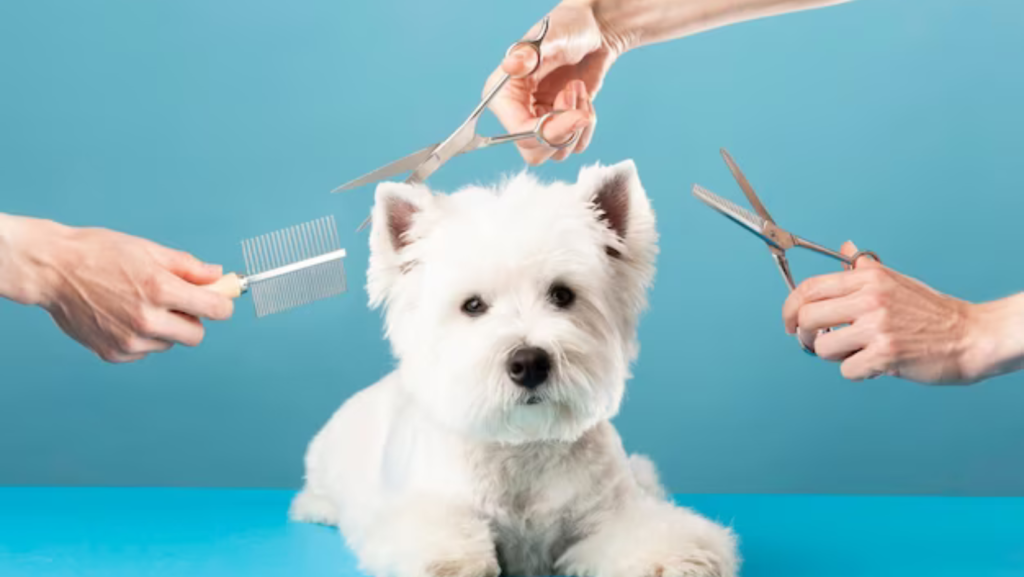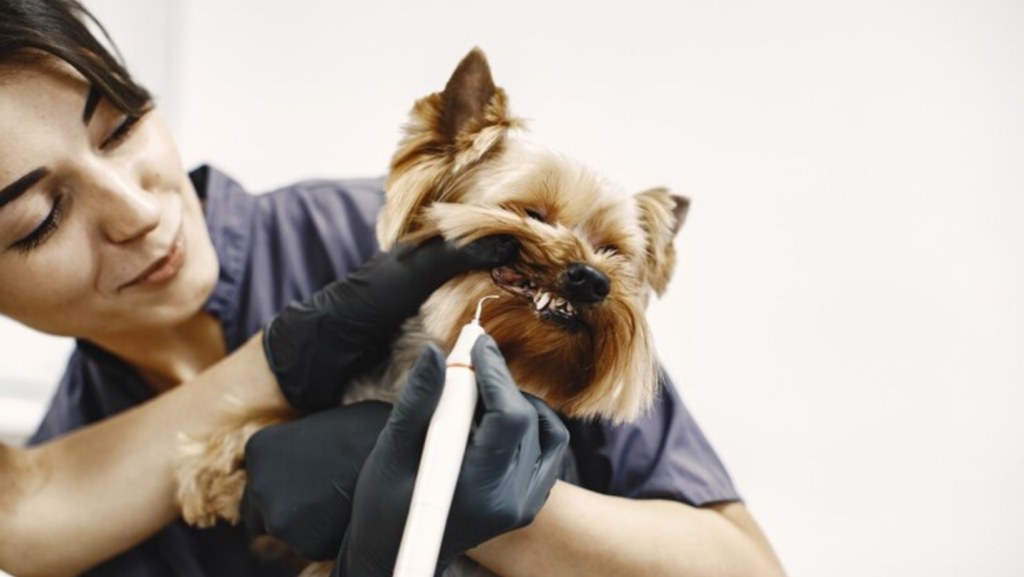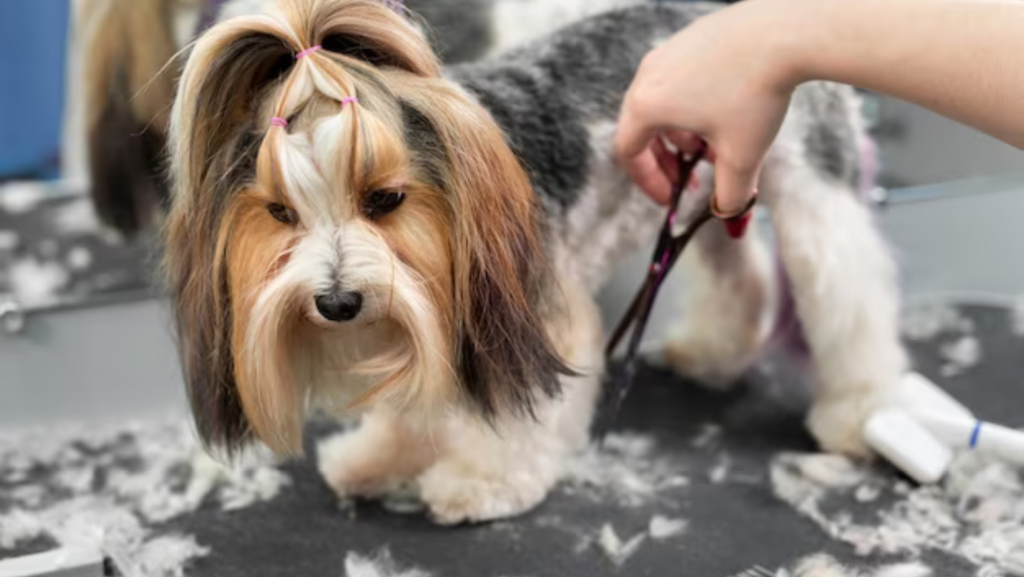Free Shipping On Order Over ₹459
Free Shipping | On Order Over ₹459
Grooming your pet is not only about maintaining their appearance but also ensuring their overall health and well-being. While regular visits to a professional groomer are beneficial, there’s a lot you can do at home to keep your furry friend looking and feeling their best. In this guide, we’ll explore some DIY pet grooming tips that will help you bond with your pet while keeping them clean, healthy, and happy.

Grooming your pet at home allows for regular bonding time and helps you develop a deeper understanding of your pet’s needs. Additionally, it can save you money in the long run and reduce your pet’s stress by avoiding unfamiliar environments.
Before you begin grooming your pet at home, it’s essential to have the right tools on hand. Invest in high-quality grooming tools such as a brush, comb, nail clippers, and pet-safe shampoo. Different pets may require different tools, so do some research or consult with your veterinarian to ensure you have everything you need.



Regular brushing is key to maintaining your pet’s coat and reducing shedding. Brushing helps remove loose fur, dirt, and tangles, preventing mats from forming. The frequency of brushing will depend on your pet’s breed and coat type, but aim to brush them at least a few times a week.
Long nails can be uncomfortable for your pet and may lead to health issues such as ingrown nails or difficulty walking. Use pet-specific nail clippers to trim your pet’s nails, being careful not to cut too close to the quick, which can cause bleeding and pain. If you’re unsure how to trim your pet’s nails safely, consult a professional groomer or veterinarian for guidance.
Regularly cleaning your pet’s ears and eyes can help prevent infections and other issues. Use a damp cloth or pet-safe wipes to gently clean around their ears and eyes, being careful not to insert anything into their ear canal or get soap in their eyes. If you notice any redness, discharge, or odor, consult your veterinarian.
While some pets may need regular baths, others may only require occasional bathing. Use a mild, pet-specific shampoo and lukewarm water to bathe your pet, being careful to avoid their eyes and ears. Thoroughly rinse off all shampoo to prevent skin irritation, and towel dry your pet afterward. If your pet dislikes baths, consider using a dry shampoo or grooming wipes as an alternative.
Dental health is crucial for your pet’s overall well-being. Regularly brushing your pet’s teeth with a pet-specific toothbrush and toothpaste can help prevent dental issues such as plaque and tartar buildup, gum disease, and bad breath. Additionally, providing dental treats and toys designed to promote dental health can supplement your pet’s oral care routine.

Keep an eye out for any changes in your pet’s skin or coat, such as redness, itching, dryness, or hair loss. These could be signs of underlying skin issues or allergies that may require veterinary attention. Maintaining a healthy diet, providing regular grooming, and using pet-safe products can help prevent skin problems in your pet.
Grooming your pet at home requires patience and gentleness. Approach grooming sessions calmly and positively, using treats and praise to reinforce good behavior. Take breaks if your pet becomes stressed or anxious, and never force them into a grooming activity they’re uncomfortable with. Building trust and creating a positive grooming experience will make future sessions much easier.
While DIY grooming is a great way to bond with your pet and save money, there are times when professional help may be necessary. If you’re unsure how to groom your pet safely or if your pet has special grooming needs, don’t hesitate to seek assistance from a professional groomer or veterinarian. They can provide expert advice and ensure your pet receives the best care possible.

Buy Pets Grooming Scissors Set
Consistency is key when it comes to pet grooming. Establish a regular grooming routine and stick to it, adjusting as needed based on your pet’s needs and preferences. By making grooming a regular part of your pet care routine, you’ll help keep your furry friend looking and feeling their best for years to come.
In conclusion, DIY pet grooming is a rewarding way to bond with your pet while keeping them clean, healthy, and happy. By following these DIY pet grooming tips and staying consistent with your grooming routine, you can ensure your furry friend always looks and feels their best. Remember to be patient, gentle, and attentive to your pet’s needs, and don’t hesitate to seek professional help when needed. With proper grooming and care, you and your pet can enjoy a lifetime of happiness together.
FAQs about DIY Pet Grooming Tips
A: DIY pet grooming tips refer to techniques and practices pet owners can use at home to groom their pets, including brushing, bathing, nail trimming, and ear cleaning, among others.
A: Frequency depends on your pet’s breed and coat type. Generally, aim for a few times a week for brushing and as needed for bathing.
A: It’s best to use pet-specific products to avoid harmful ingredients. Look for items labeled safe for animals.
A: Be patient and introduce grooming gradually with positive reinforcement and treats.
A: Seek assistance from a professional groomer or veterinarian for guidance and proper care.
Sign up for newsletter to receive
exclusive offer & discount
Popular Search: pet toys | Dog food |Pet Grooming | Pet Walking Accessories | Cat Teaser Playing Stick | Rope Toy | Cotton Rope Knot Ball Toy | Rubber Bone Toy | Rope Carrot Toy | Food Bowl | Chicken & Mutton Munchie Sticks | Fur Remover from Clothes | Brush Body Scrubber Shampoo Dispenser | Pet Massage Rubber Bath Glove | Nail Cutter Clipper And Filer |